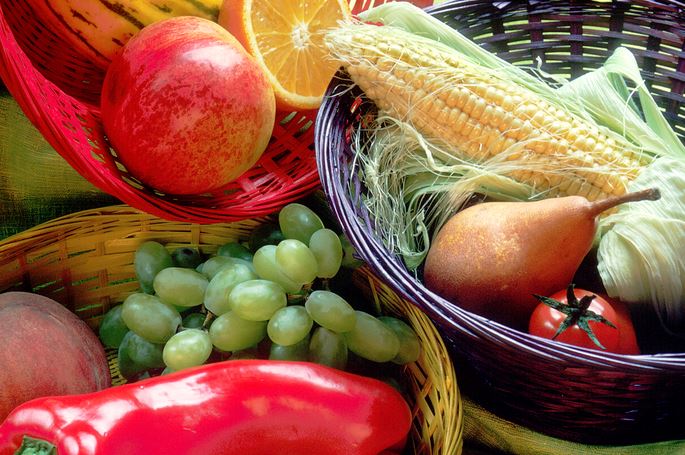You’re (Still) Not Eating Enough Fruits and Veggies
People who eat just five servings of fruits and vegetables a day lower their risk of cancer, heart disease, stroke, diabetes and other conditions.
But Americans just don’t eat their veggies.

Everyone Needs to Eat More Fruits and Vegetables
Guidelines are clear—people should get a cup and a half to two cups of fruit every day and two to three cups of vegetables (that’s nine servings – yes, nine!). But three-quarters of Americans do not manage to get that much fruit and 87 percent fail to eat enough vegetables. On average, Americans eat only one serving of fruit a day — equivalent to a small glass of orange juice or an apple.
Reasons to Eat More Fruits and Veggies
They’re delicious
Whether you’re craving sweet or spicy, soft or crunchy… fruits and vegetables come in every texture and flavor profile imaginable. Chances are, if you’re not a fan of vegetables, you just haven’t tried enough. There’s so much variety, that there is almost certainly a fruit and vegetable option for everyone.
They go with everything
Fruits and veggies can be fresh, frozen, canned, dried or juiced. Use them in salads, sauces, sides or as a main course (eggplant parmesan, anyone?). They also make excellent easy-to-grab snacks.
They’re nutritious (duh!)
Fruits and veggies are rich in fiber, vitamin C, proteins, calcium, enzymes and antioxidants that you can’t get anywhere else. Plant chemicals called phytochemicals can reduce inflammation and eliminate carcinogens, while others regulate the rate at which your cells reproduce, get rid of old cells and maintain DNA.
They may reduce disease risk
One study found that people who ate seven or more servings of fruits and vegetables were 42 percent less likely to die from any cause over the next eight years compared to those who ate less than one serving a day.
How You Can Eat More Fruits and Vegetables Now
How do we go about getting nine servings every day? Most of us had a hard time working in five…
Easy Access
Step One: Buy fruits and veggies. If you have them on hand, you’re more likely to use them. Having them already cut up makes it easier to incorporate them into meals and easy to grab for a snack.
Another option: make a bowl of fruit part of your decor. Set it on your table, desk, kitchen counter, any where you find yourself reaching for a snack. Plus, it will give a nice punch of seasonal color to any space.
Juices and Smoothies
Juices and smoothies allow you to eat a variety of fruits and vegetables. You can even sneak in some extra veggies for picky eaters because the fruit juice makes it taste good – now you’ve got a fruit AND a vegetable serving.
Think, “Veggies First” at every meal
This includes breakfast. This could mean adding bananas to your cereal, berries to your yogurt or vegetables to your omelet.
The new guidelines recommend half of your plate be filled with fruits and vegetables. Try to approach your meals by basing them on what vegetables you’ll have, and then think of the grains and protein to go with it.
Veggie-fy old favorites
Bump up the veggies on dishes you love. Adding finely chopped zucchini, mushroom, onions, eggplant, or yellow squash to a flavorful spaghetti sauce is an easy veggie-fication. So is adding broccoli to mac n’cheese. The smaller you chop the veggies, the less likely you are to notice they’re there.
Do you wish your family would eat more fruits and vegetables? What are some ways that you are adding more into your diet? Tell us in the comments below!